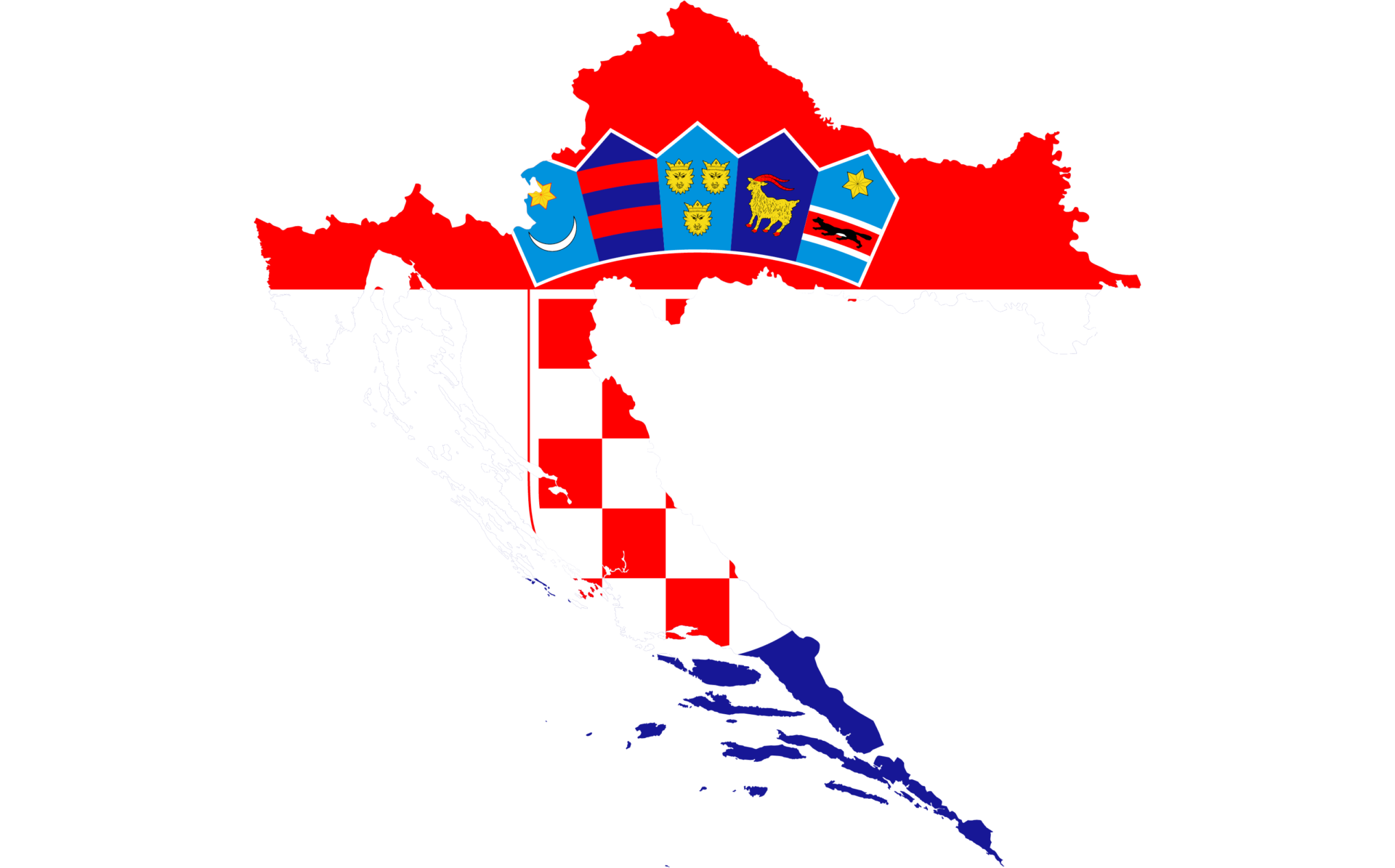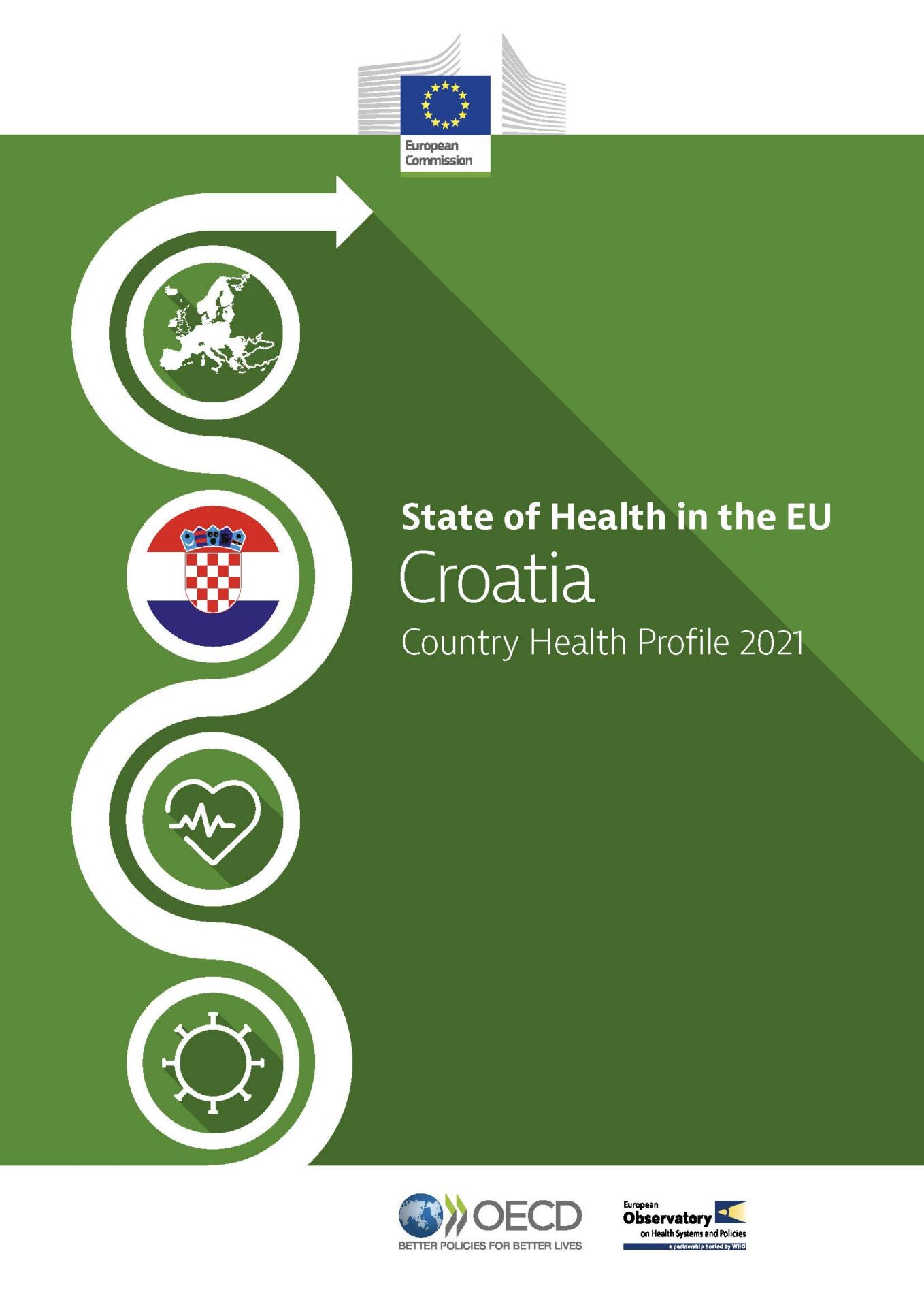Life expectancy in Croatia remains below the EU average and temporarily declined in 2020 as a result of deaths that occurred during the Covid-19 pandemic. Although the Croatian health system provides equitable access to a broad range of services, unmet needs are likely to have increased during the pandemic.
With a sufficient level of physical infrastructure and number of health workers, Croatia responded quickly to the first wave of the Covid-19 pandemic but was more hesitant to reimpose stringent measures in subsequent waves.
Rates of preventable and treatable mortality before the pandemic were comparatively high, suggesting scope for strengthening public health policies and improving healthcare.
Croatia’s health status
Life expectancy in Croatia in 2020 was almost three years below the EU average. One of the reasons for this persistent gap is that Croatia has one of the highest mortality rates from cancer in the EU. In 2020, Covid-19 became the third leading cause of mortality. Life expectancy temporarily fell by just over nine and a half months between 2019 and 2020, reaching 77.8 years, slightly more than the average drop across the EU.
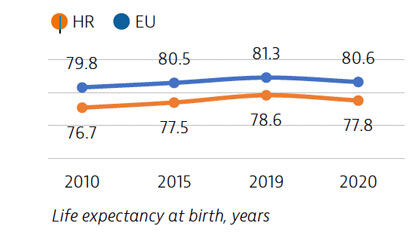
Risk factors
Croatia has much scope to address modifiable health risk factors, including unhealthy diets, tobacco smoking, alcohol consumption and low physical activity. Smoking rates among adults are high, adolescent smoking is among the highest in the EU and the proportion of people who are obese is also high.
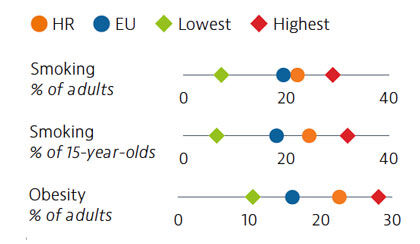
Croatia’s health system
Health spending per capita is lower in Croatia than in most other EU countries, and has remained fairly constant in recent years. However, public funding as a proportion of total expenditure was 81.9% in 2019 – higher than in most EU countries with comparative levels of expenditure. The share of public financing was higher than the EU average for all areas of care, with a higher proportion of public coverage in particular for dental care and pharmaceuticals.
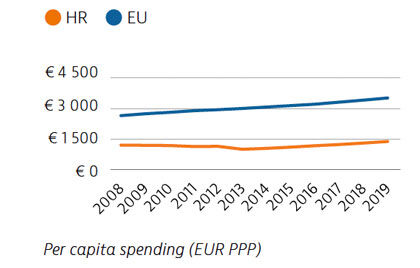
Effectiveness
Mortality rates from preventable and treatable causes in Croatia are far above the EU average. This is due in part to weak intersectoral policies to address key determinants of ill health, such as smoking and poor nutrition, as well as to shortcomings in providing timely and effective care.
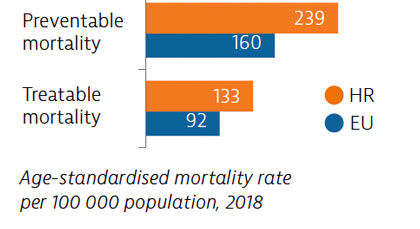
Accessibility
During the first 12 months of the pandemic, a considerable share of people reported unmet needs for medical care. However, a higher proportion than in the EU overall resorted to teleconsultations as a means of accessing services.

Resilience
During the first wave of the pandemic, Croatia quickly implemented containment measures and scaled up resources. It was harder hit by the second wave. By the end of August 2021, 42% of the population had received at least one dose of a Covid-19 vaccine.
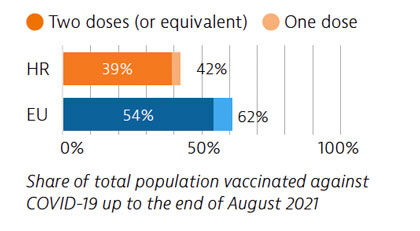
OECD/European Observatory on Health Systems and Policies (2021), Croatia: Country Health Profile 2021, State of Health in the EU, OECD Publishing, Paris/European Observatory on Health Systems and Policies, Brussels.



